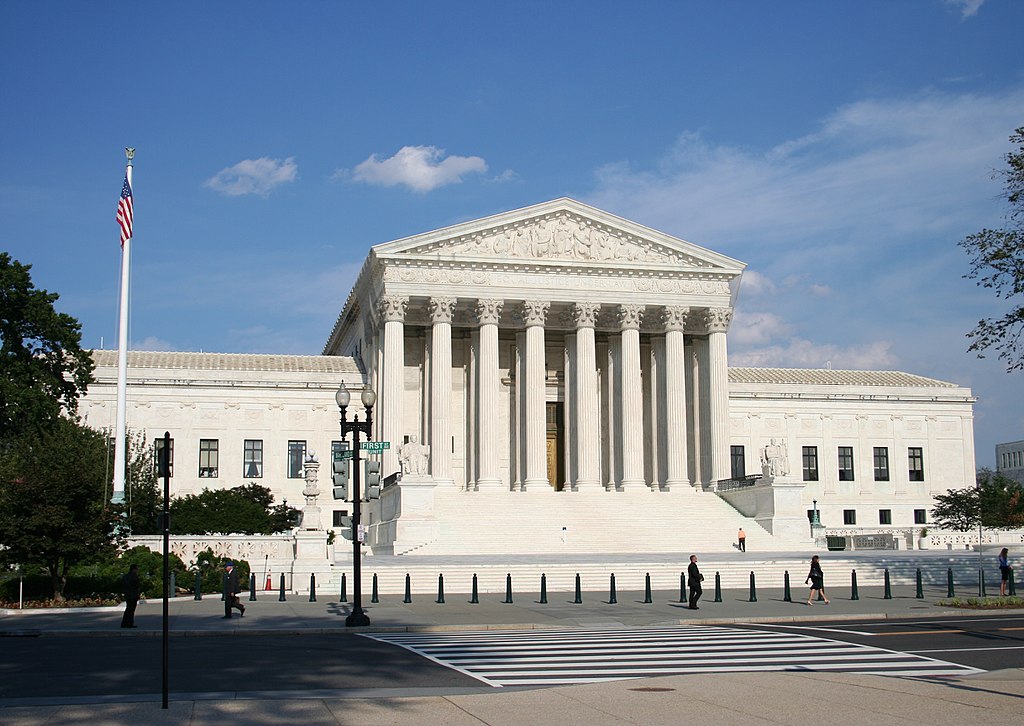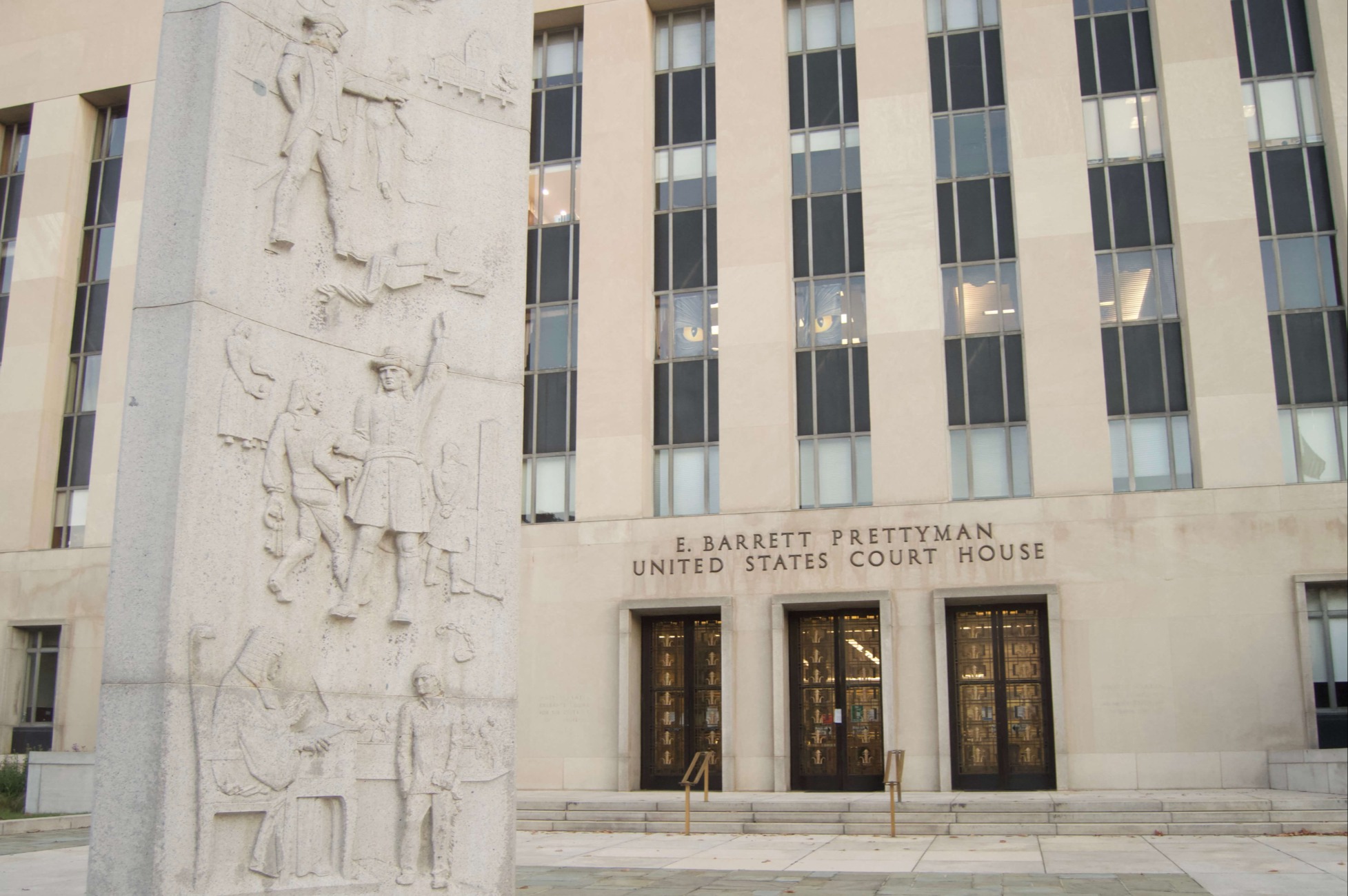Understanding the Supreme Court’s Carpenter Decision
The Supreme Court has handed down its long-awaited decision in Carpenter v. United States. The opinion is only an hour old as I start to write this, but I wanted to offer some initial thoughts that I will also cross-post at The Volokh Conspiracy.
I'll do it in the form of a question-and-answer session, asking questions you may have and offering answers as best I can. Also, rather than wait to the end and post all of my thoughts at once, I will add to this post throughout the day.

Published by The Lawfare Institute
in Cooperation With

The Supreme Court has handed down its long-awaited decision in Carpenter v. United States. The opinion is only an hour old as I start to write this, but I wanted to offer some initial thoughts that I will also cross-post at The Volokh Conspiracy.
I'll do it in the form of a question-and-answer session, asking questions you may have and offering answers as best I can. Also, rather than wait to the end and post all of my thoughts at once, I will add to this post throughout the day.
1. What did the court rule?
The court ruled that access to a person's historical cell-site records—or at least seven days or more of cell site records—is a Fourth Amendment search because it violates the person’s “legitimate expectation of privacy in the record of his physical movements.” The court also held that accessing those records requires a warrant.
2. Who wrote the opinion, and what was the vote breakdown?
The chief justice wrote the opinion. It was a 5-4 decision, with Chief Justice Roberts joined by the four liberal-leaning Justices (Ginsburg, Breyer, Kagan, and Sotomayor). The four remaining justices dissented (Kennedy, Thomas, Alito, and Gorsuch). Each of the four dissenters wrote their own dissents, which may explain why the opinion took so much time.
3. Is there a clear majority opinion, or were there a bunch of concurrences?
There’s a clear majority. The case was 5-4, but none of the justices who joined the majority wrote separately, and all joined the opinion in full. The only separate opinions were dissents.
4. Okay, so what was the reasoning of the majority opinion?
Relying on the concurring opinions in United States v. Jones, the court holds that a person has “reasonable expectation of privacy in the whole of their physical movements.” Access to historical cell site records violates that reasonable expectation of privacy because it is a “sweeping mode[e] of surveillance” that gives the government the power of “near perfect surveillance, as if it had attached an ankle monitor to the phone's user.” It is “tireless and absolute surveillance.” The surveillance is “detailed, encyclopedic, and effortlessly compiled.” It “provides an all-encompassing record of the holder's whereabouts.” As a result, it violates the reasonable expectation of privacy people have in their physical movements from the Jones concurrences.
5. How is accessing historical cell-site records “absolute surveillance”? It’s not precise, and it’s only generated when a call is made, right?
This is one of the most interesting aspects of the opinion. Instead of focusing on the facts of this case, the court seems more interested in where the technology is thought to be going. In this case, the records only were precise to a range of 0.5 to 2 miles, and that records were only generated when a call was actually placed. It just reveals the neighborhood the phone was in when a call was made But the chief justice’s opinion presents the technology as vastly more invasive and detailed than the record indicates. It is absolute perfect surveillance, in the court’s vision, like a GPS device around a person’s ankle.
In response to the dissent’s pointing out the record, the chief justice says the court has to take into account where the technology is going. “The accuracy of CSLI is rapidly approaching GPS-level precision,” the chief justice predicts, and the Court has to adopt a rule in light of what the technology will look like then. In effect, the technology isn't actually perfect and absolute surveillance now, but the Justices are confident that it is going to be that eventually.
6. Does any accessing historical cell-site records count as a search? Or is short-term warrantless surveillance permitted?
We don't know. Regular readers will recall the debate over the mosaic theory, by which perhaps short-term surveillance is not a search but long term surveillance is, on the thinking that long-term surveillance lets the government create a mosaic of a person's life. That was key to the Jones concurrences. The court leaves open that there may be mosaic-based short-term vs. long-term distinctions for cell-site collection: “[W]e need not decide whether there is a limited period for which the Government may obtain an individual's historical CSLI free from Fourth Amendment scrutiny, and if so, how long that period might be. It is sufficient for our purposes today to hold that accessing seven days of CSLI constitutes a Fourth Amendment search.”
7. Might this reasoning be based on equilibrium-adjustment?
Indeed! I have written about how the Supreme Court often engages in equilibrium-adjustment when new technology threatens the balance of government power. If technology gives the government too much new power that can be abused based on old rules, the court expands legal protection to restore old levels of power and limit abuses. On the flip side, if technology threatens to narrow government power too much that can unduly limit the government's ability to solve crimes under old rules, the court shrinks legal protection to restore old levels of power and ensure the government can still solve enough cases.
In Carpenter, the chief justice is very clear that this what is going on. Throughout the opinion, he roots his analysis in the idea that cell-site surveillance is a new tool that gives the government new power that can be abused, and that the law must change course to ensure that the government doesn't get too much power from a mechanical application of the old rules.
Here's the chief justice in the conclusion:
As Justice Brandeis explained in his famous dissent, the court is obligated—as "[s]ubtler and more far-reaching means of invading privacy have become available to the Government"—to ensure that the "progress of science" does not erode Fourth Amendment protections. Olmstead v. United States, 277 U. S. 438, 473–474 (1928). Here the progress of science has afforded law enforcement a powerful new tool to carry out its important responsibilities. At the same time, this tool risks Government encroachment of the sort the Framers, "after consulting the lessons of history," drafted the Fourth Amendment to prevent. Di Re, 332 U. S., at 595
There's another revealing passage when the chief justice is responding to Justice Alito on what the standard should be for accessing the records, assuming that it is a search. After going through some legal analysis, the chief justice sort of stops and says (without using the label), but this is equilibrium-adjustment! Here's the paragraph:
JUSTICE ALITO overlooks the critical issue. At some point, the dissent should recognize that CSLI is an entirely different species of business record—something that implicates basic Fourth Amendment concerns about arbitrary government power much more directly than corporate tax or payroll ledgers. When confronting new concerns wrought by digital technology, this Court has been careful not to uncritically extend existing precedents. See Riley, 573 U. S., at ___ (slip op., at 10) ("A search of the information on a cell phone bears little resemblance to the type of brief physical search considered [in prior precedents].")
The new technology is a “new phenomenon,” and an “entirely different species” of record. Old rules don’t apply. Instead, the court goes back to “the critical issue” of “basic Fourth Amendment concerns about arbitrary government power” that are “wrought by digital techology.” In other words, equilbrium-adjustment.
8. Does this reasoning apply just for physical location tracking, or does it apply more broadly?
That's the big question. On one hand, the reasoning of the opinion is largely about tracking a person's physical location. The opinion takes as a given that you have a reasonable expectation of privacy in the "whole" of your "physical movements." The court has never held that, so it's sort of an unusual thing to just assume! But the court seems to be getting it mostly from Justice Alito's Jones concurrence, and the idea, as Alito wrote in Jones, that "society's expectation has been that law enforcement agents and others would not—and indeed, in the main, simply could not—secretly monitor and catalogue every single movement of an individual's car for a very long period."
The opinion is mostly rooted in that idea of tracking physical location, and in particular the idea of near perfect and total surveillance that allows the government to monitor us as if we had GPS trackers stapped to our ankles. Near the end, the chief justice adds a very interesting paragraph saying that the opinion is narrow. It's worth reading:
Our decision today is a narrow one. We do not express a view on matters not before us: real-time CSLI or "tower dumps" (a download of information on all the devices that connected to a particular cell site during a particular interval). We do not disturb the application of Smith and Miller or call into question conventional surveillance techniques and tools, such as security cameras. Nor do we address other business records that might incidentally reveal location information. Further, our opinion does not consider other collection techniques involving foreign affairs or national security. As Justice Frankfurter noted when considering new innovations in airplanes and radios, the Court must tread carefully in such cases, to ensure that we do not "embarrass the future." Northwest Airlines, Inc. v. Minnesota, 322 U. S. 292, 300 (1944).
(As an aside, isn't it interesting that collection of cell-site records is a new-fangled surveillance method but security cameras are merely "conventional techniques and tools"? Why is that? Because people can see cameras but not cell sites? But I digress.) In a footnote, he adds in response to a dissent that we "do not begin to claim all the answers today, and therefore decide no more than the case before us." Perhaps even more significantly, the Chief elsewhere says that it will be "the rare case where the suspect has a legitimate privacy interest in records held by a third party," and that in "the overwhelming majority of investigations" there will be no Fourth Amendment protection.
So you could look at that language and say that this is a narrow opinion only about perfect location tracking by Big Brother.
On the other hand, there's lots of language in the opinion that cuts the other way. Although the Court "decides no more than the case before us," it also recasts a lot of doctrine in ways that could be used to argue for lots of other changes. Its use of equilibrium-adjustment will open the door to lots of new arguments about other records that are also protected. For example, what is the scope of this reasonable expectation of privacy in the "whole" of physical movements? Why is there? The Jones concurrences were really light on that, and Carpenter doesn't do much beyond citing them for it: What is this doctrine and where did it come from?
In addition, Carpenter's view of Miller and Smith is narrower than the opinions in Miller and Smith suggest, Carpenter suggests that the third-party doctrine is less of the bright-line rule that the cases suggest and more of a fact-specific standard. At the very least that is going to invite a boatload of litigation on how far this new reasoning goes.
9. What's the status of the third-party doctrine?
It lives, but there is an equilibrium-adjustment cap on it. The old understanding was that the third-party doctrine is a bright-line rule: When you voluntarily disclose information to someone, whether to an undercover officer or a business you're working with, you don't have Fourth Amendment rights in the recipient's copy of that information. Chief Justice Roberts says that the third-party doctrine is more limited than that.
The way I read his opinion, the chief seems to be saying that there is an equilibrium-adjustment limit on the third-party doctrine. Once the third-party doctrine starts to give the government massive new powers, the third-party doctrine may no longer apply. Here's the key passage:
There is a world of difference between the limited types of personal information addressed in Smith and Miller and the exhaustive chronicle of location information casually collected by wireless carriers today.The Government thus is not asking for a straightforward application of the third-party doctrine, but instead a significant extension of it to a distinct category of information.
Part of the thinking here is an adoption of Carpenter's rhetoric in his brief that the third-party doctrine only "diminishes" an expectation of privacy. That's not what the cases say; the cases say that the doctrine entirely eliminates an expectation of privacy. But by adopting the idea that the third-party doctrine only "diminishes" an expectation of privacy, the court effectively sets up a hierarchy: Because the information revealed by cell-site records collection is claimed to be vastly more revealing and sensitive than the records in Smith and Miller, and the surveillance is more pervasive, the third-party doctrine's diminishing of privacy still leaves a lot of privacy behind that is enough to satisfy the Fourth Amendment.
In effect, disclosure is enough to eliminate privacy when the records disclosed only involve a normal amount of privacy. But when the records are super private and pervasive, disclosure isn't enough to eliminate Fourth Amendment rights.
In his dissent, Justice Gorsuch suggests that this means that Smith and Miller are "on life support," but I don't see that in the majority. After all, the chief says in his opinion that [w]e do not disturb the application of Smith and Miller." Rather, the idea seems to be that there's an equilibrium-adjustment limit on how far the justices will take the third-party doctrine. At some point the surveillance is just too much to allow, and at that point the third-party doctrine doesn't apply. The facts of Smith and Miller were on one side of the line, and seven days of this technology crossed over to the other side.
What other technology and its uses might also cross it? We don't yet know.
Note: This post will be updated periodically with additional analysis. It was last updated at 4:56 p.m. on Friday, June 22.





